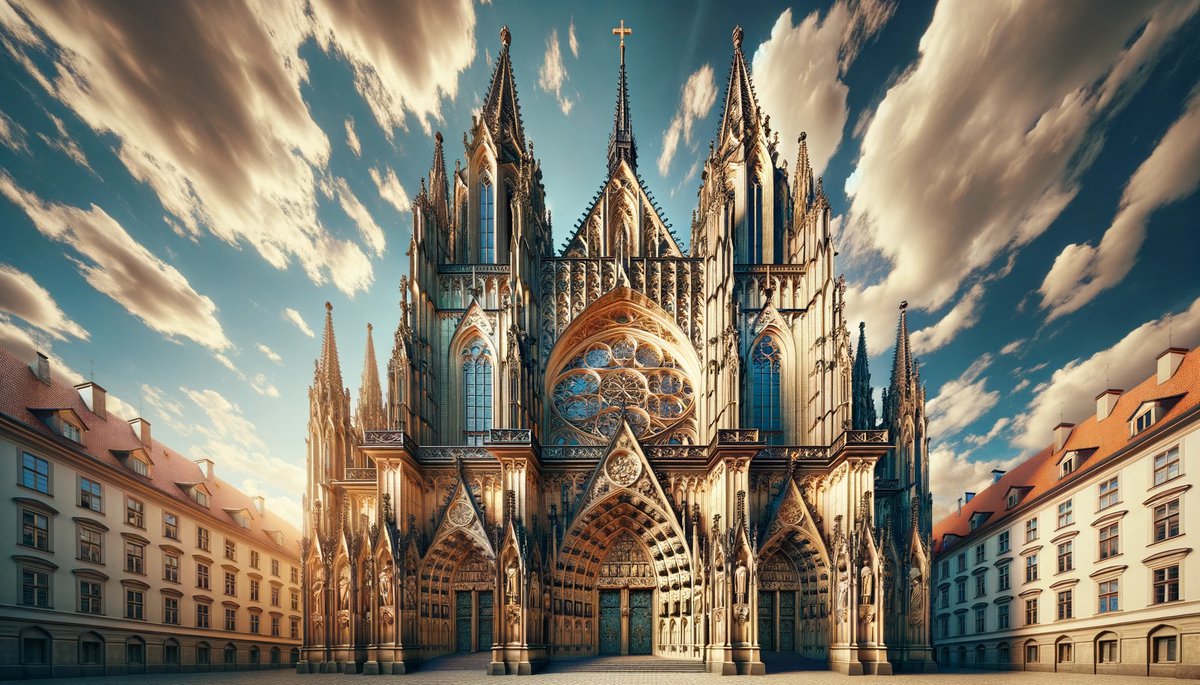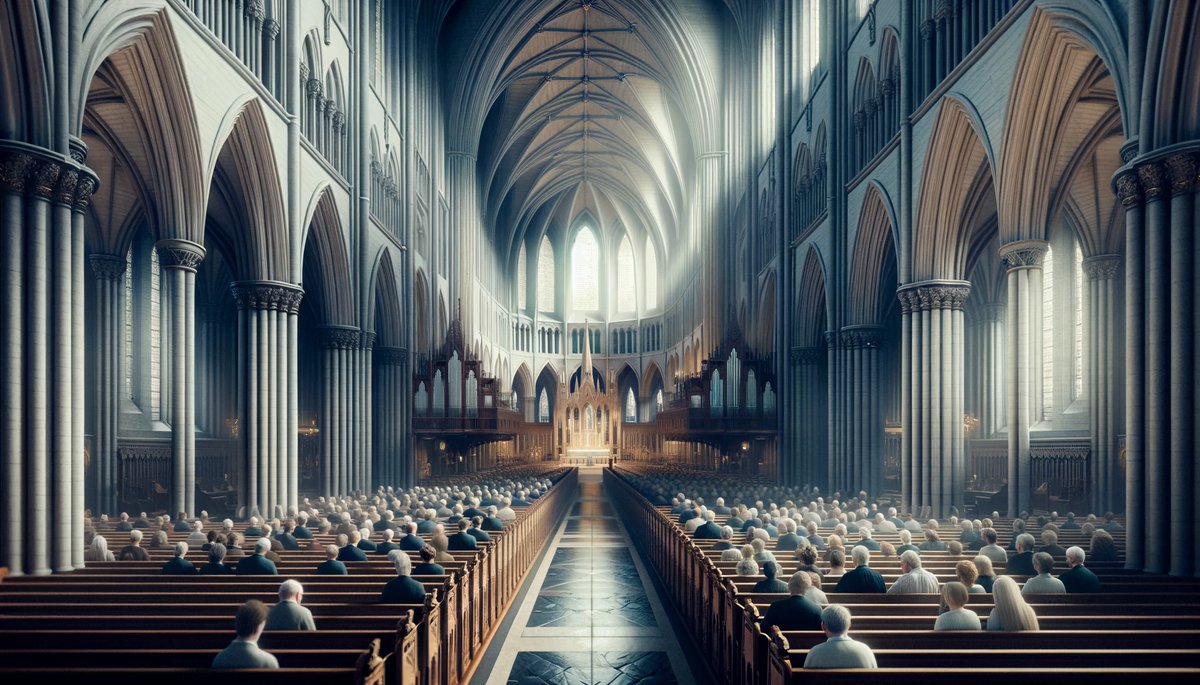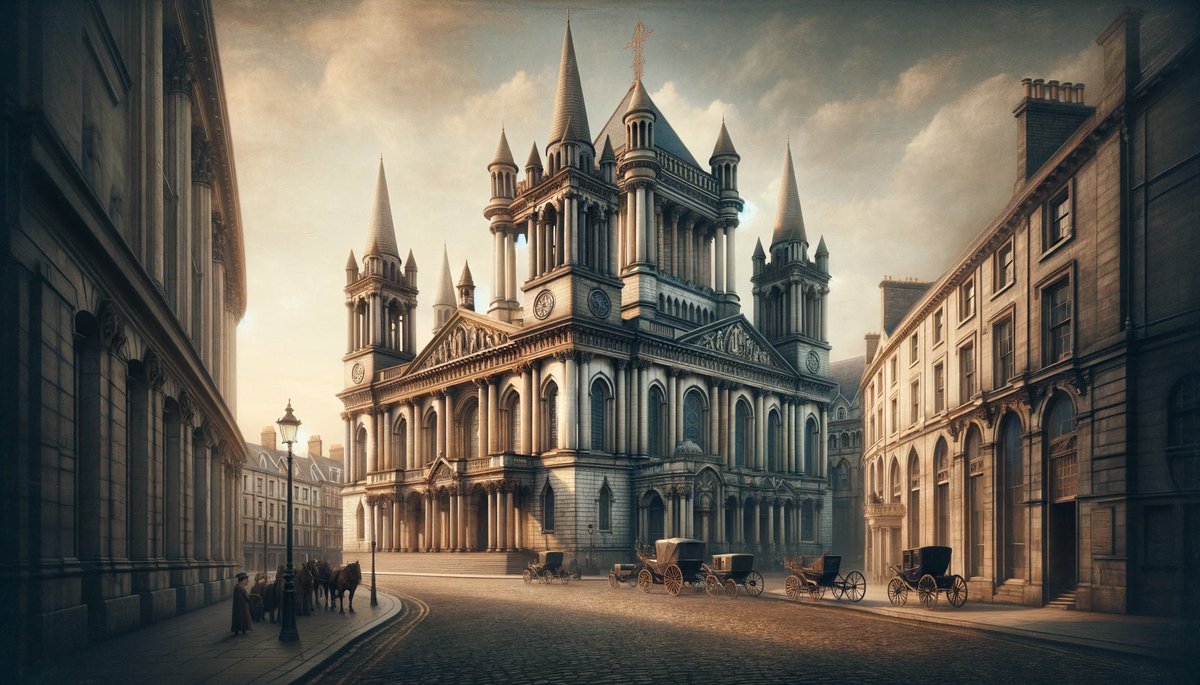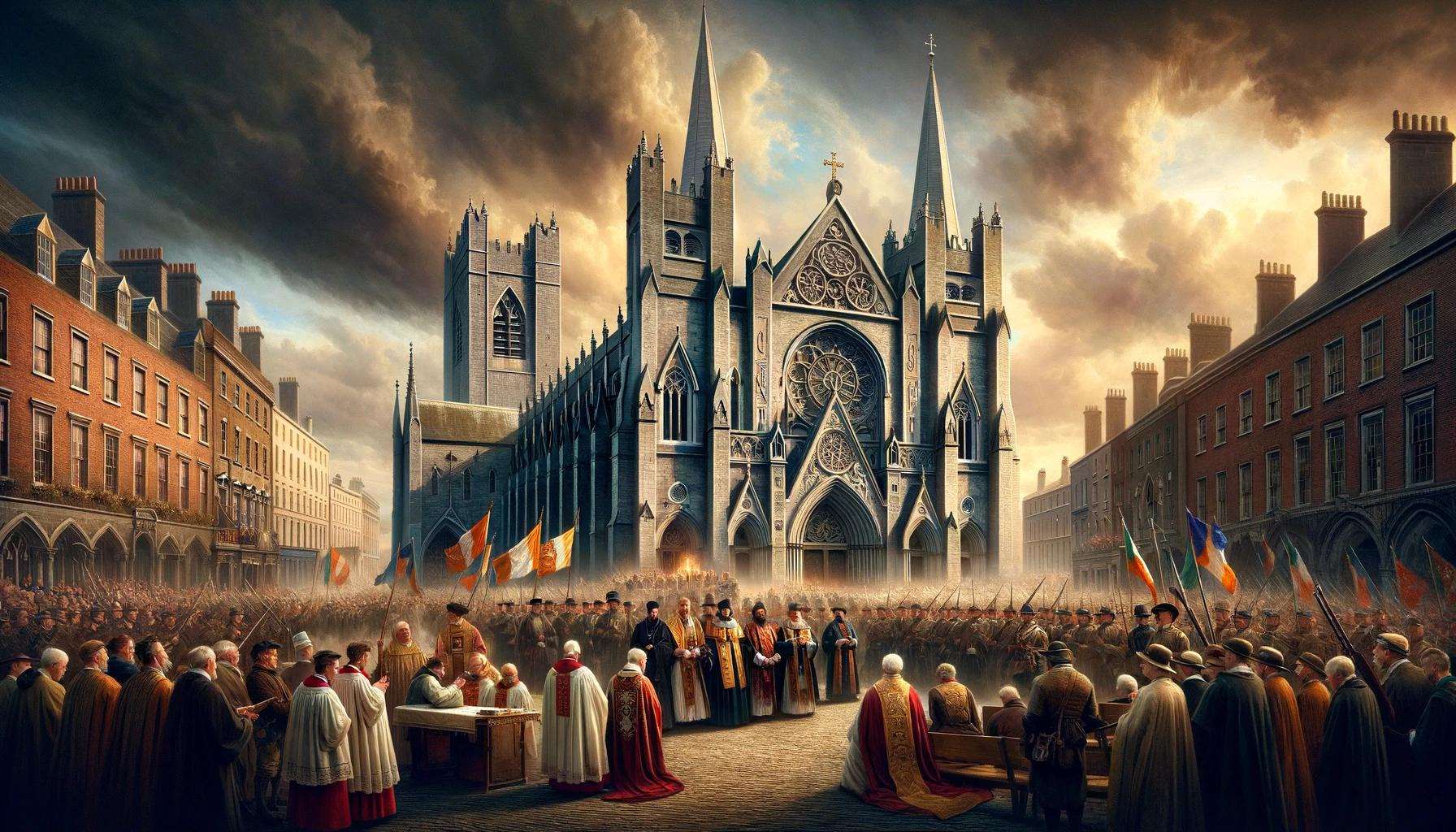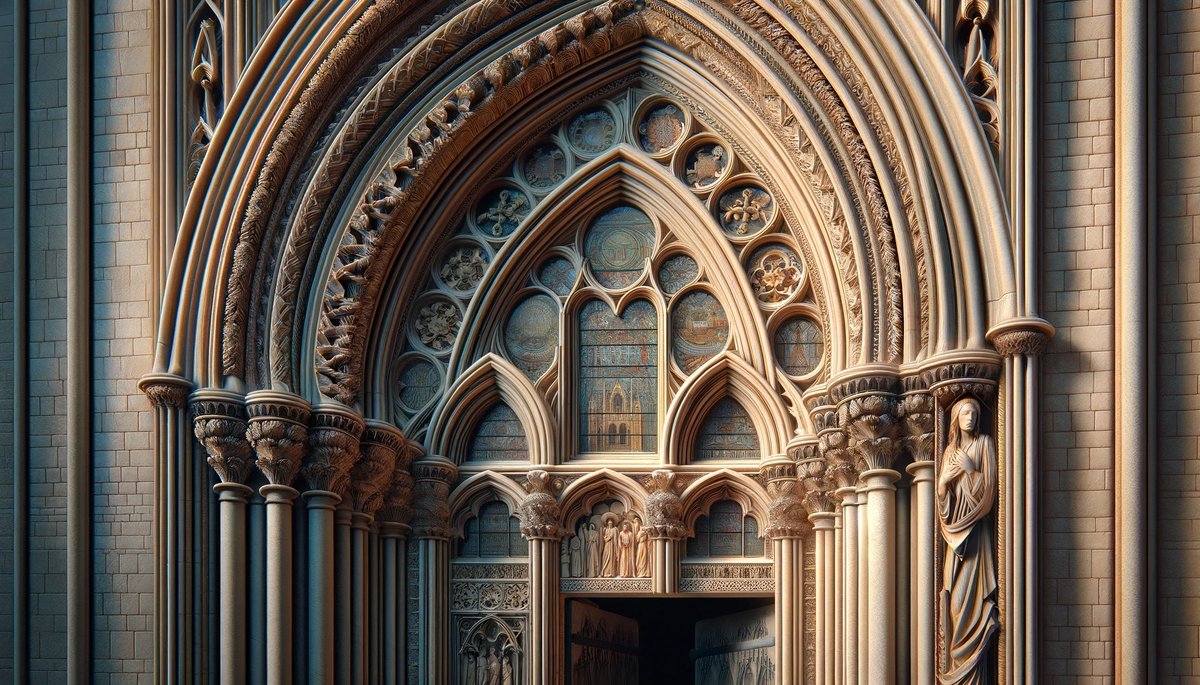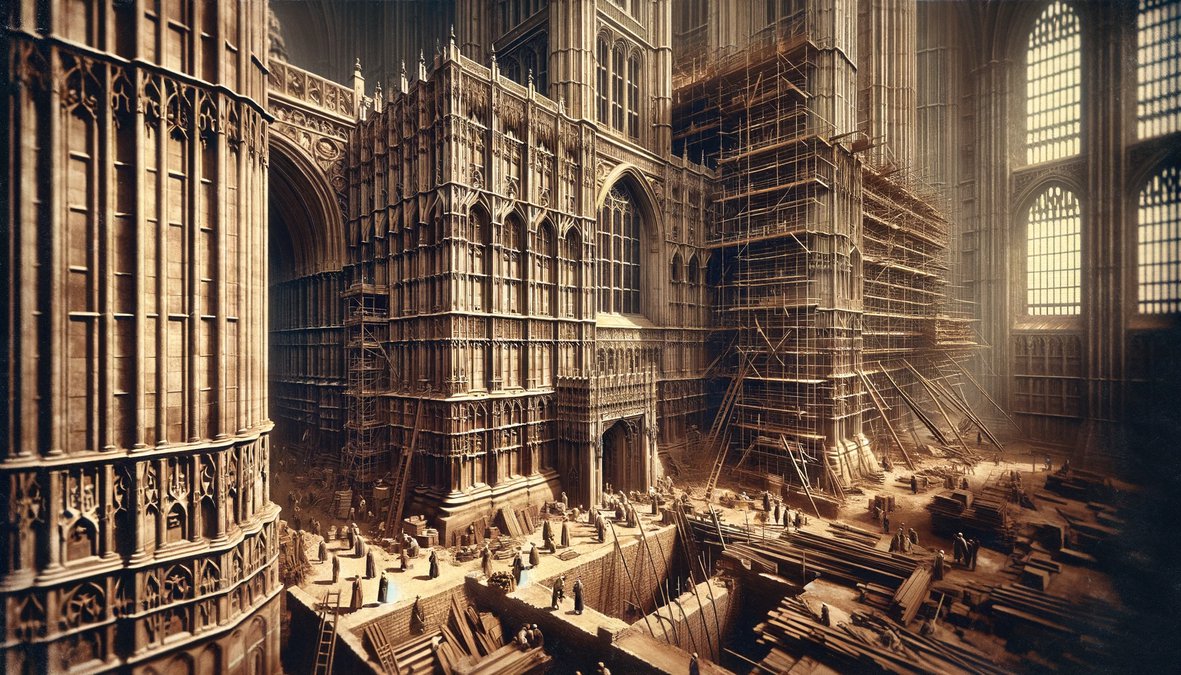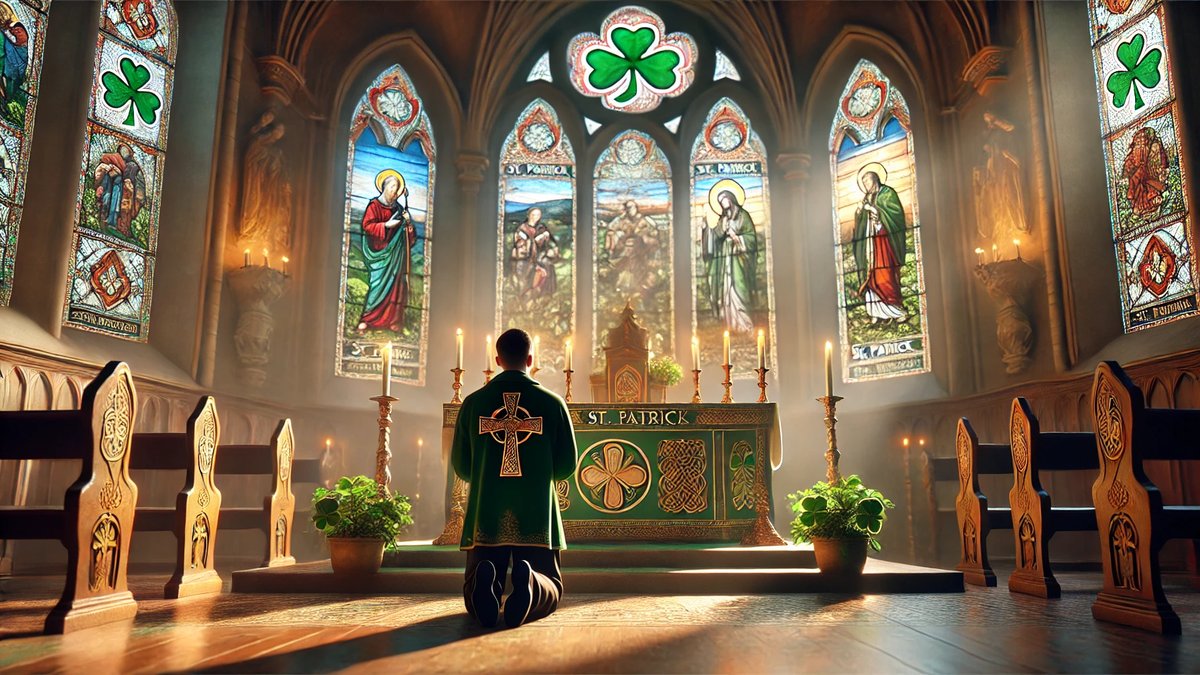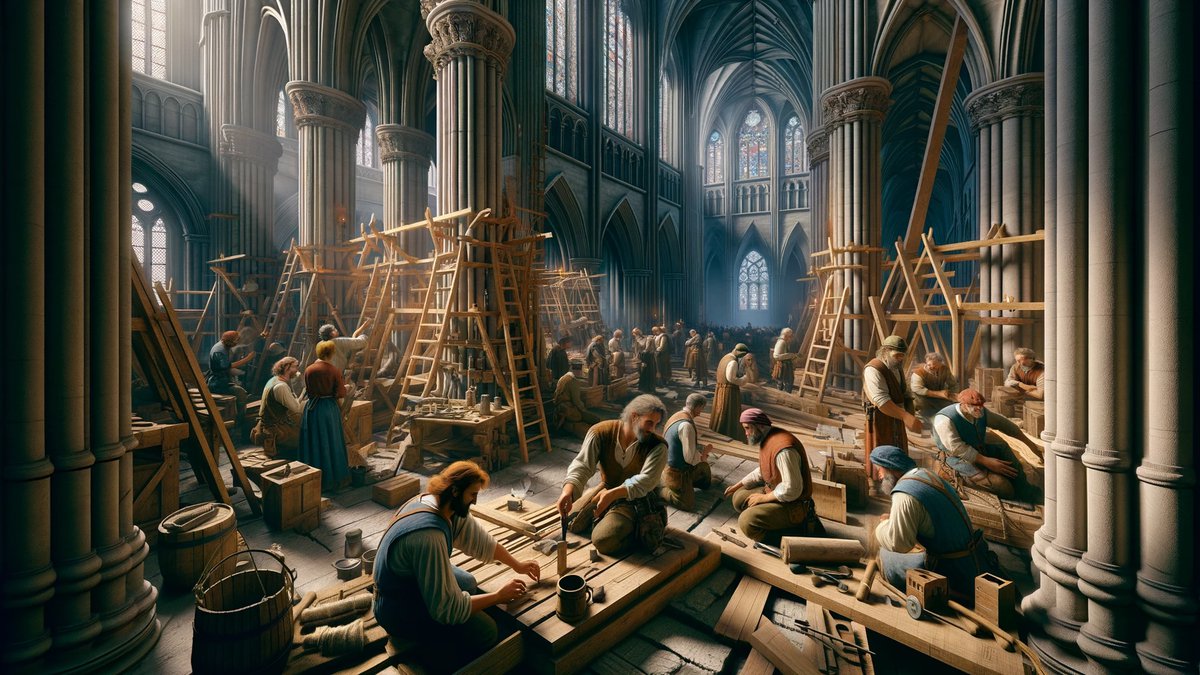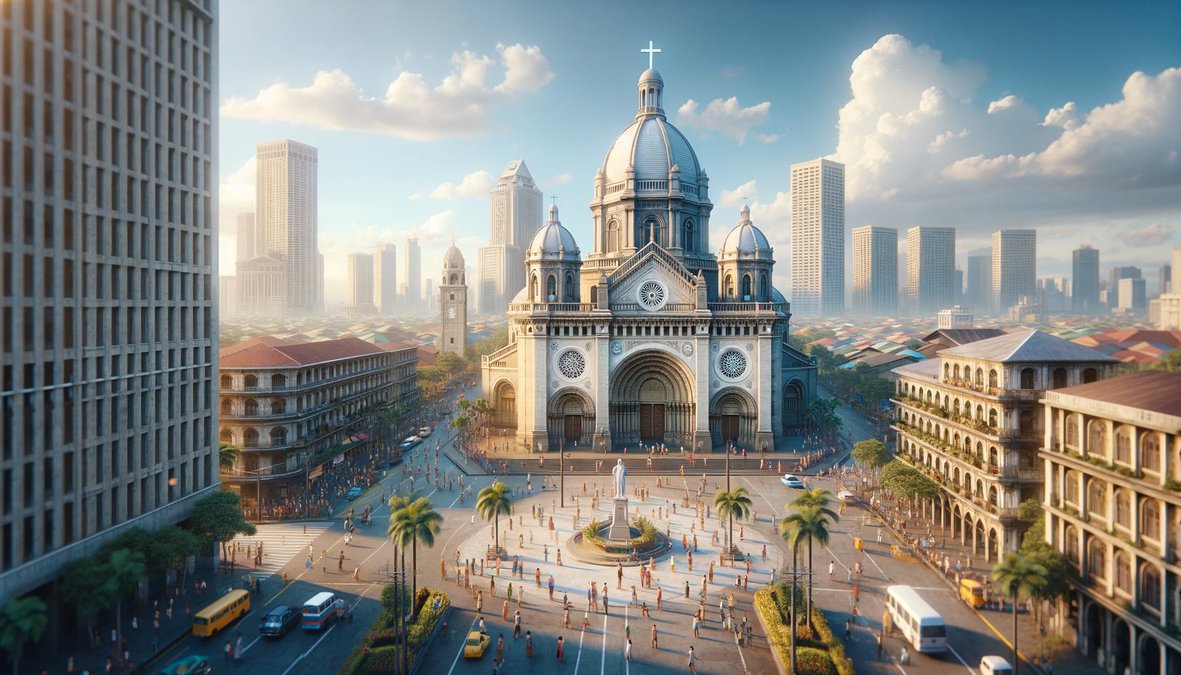Home>Arts and Culture>How Old Is St. Patrick’s Cathedral In New York
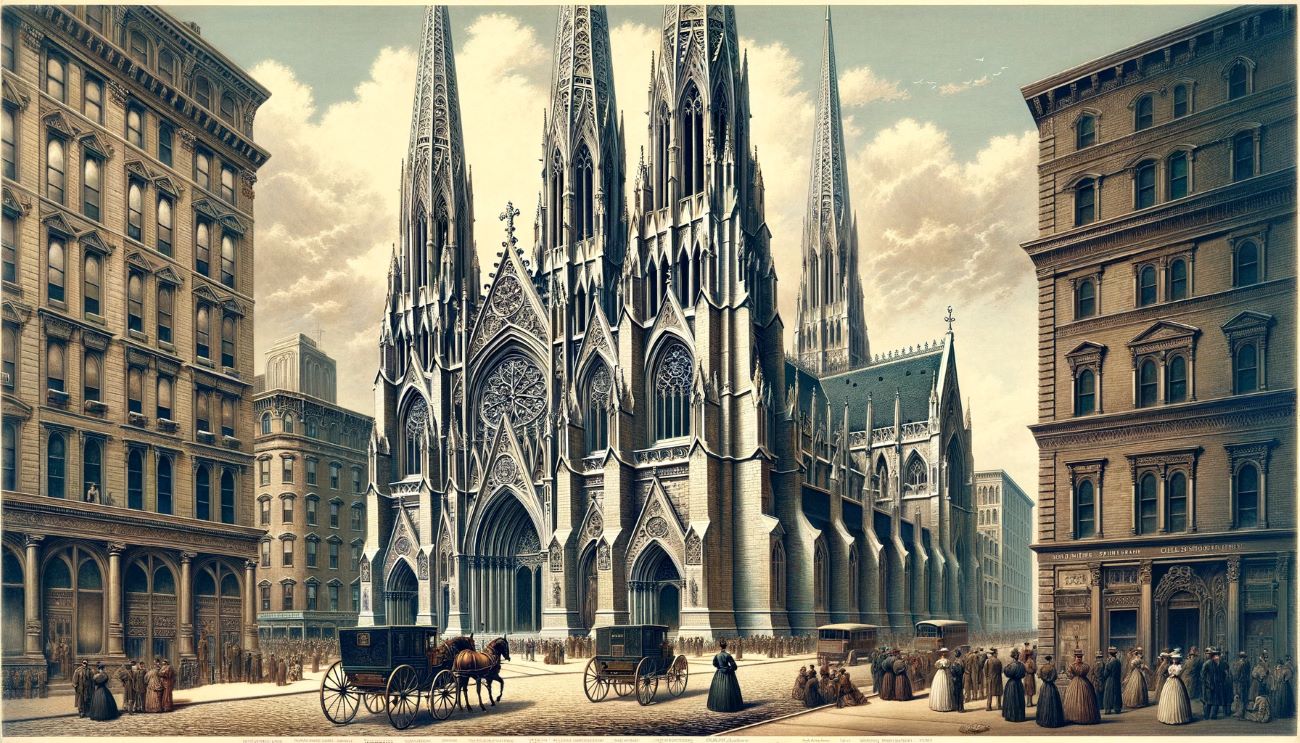

Arts and Culture
How Old Is St. Patrick’s Cathedral In New York
Published: February 16, 2024
Jason DeRose, Managing Editor at Christian.net, uses his expertise in religion and journalism to deepen understanding of faith's societal impacts. His editorial leadership, coupled with a strong academic background, enriches the platform’s diverse content, earning him recognition in both journalism and religious circles.
Discover the rich history of St. Patrick's Cathedral in New York, a renowned landmark in the city's arts and culture scene. Learn about its age and significance today!
(Many of the links in this article redirect to a specific reviewed product. Your purchase of these products through affiliate links helps to generate commission for Christian.net, at no extra cost. Learn more)
Table of Contents
Introduction
St. Patrick's Cathedral, a magnificent architectural masterpiece nestled in the heart of New York City, stands as a symbol of faith, history, and artistry. This iconic structure, with its awe-inspiring spires and intricate facades, has been a focal point of the city's skyline for over a century. As one of the most renowned landmarks in the United States, St. Patrick's Cathedral holds a significant place in the hearts of both locals and visitors alike.
The cathedral's rich history and cultural significance make it a must-visit destination for those seeking to immerse themselves in the heritage of New York City. Whether one is drawn to its religious importance, architectural grandeur, or historical legacy, St. Patrick's Cathedral offers a captivating blend of spirituality and artistry that transcends time.
As we delve into the depths of St. Patrick's Cathedral, we will uncover the captivating narrative of its construction, the architectural marvels that adorn its structure, and the enduring legacy it continues to uphold. Join us on this journey through time and artistry as we unravel the captivating tale of St. Patrick's Cathedral, a testament to the enduring spirit of faith and creativity.
History of St. Patrick's Cathedral
St. Patrick's Cathedral has a storied history that intertwines with the growth and evolution of New York City. The idea for the cathedral was conceived in the early 19th century, a time when the Catholic population in the city was rapidly expanding due to waves of immigration. The need for a grand cathedral to accommodate the burgeoning Catholic community became increasingly apparent, and thus, the vision for St. Patrick's Cathedral was born.
In 1850, Archbishop John Hughes announced the plan to build a new cathedral to replace the original St. Patrick's Cathedral, which was located at the corner of Mott and Prince Streets in present-day SoHo. The chosen location for the new cathedral was the intersection of Fifth Avenue and 50th Street, a prime spot in midtown Manhattan. The cornerstone was laid in 1858, marking the official commencement of the cathedral's construction.
However, the onset of the Civil War and other challenges delayed the progress of the construction. It wasn't until 1878 that the completed section of the cathedral was opened and dedicated. The entire construction process spanned over two decades, with the cathedral finally being fully completed in 1879.
The cathedral's history is also intertwined with the legacy of the renowned architect James Renwick, Jr., who was commissioned to design the new St. Patrick's Cathedral. Renwick's vision for the cathedral combined the grandeur of Gothic Revival architecture with intricate details and ornate embellishments, resulting in a structure that exuded timeless elegance and spiritual significance.
Throughout its history, St. Patrick's Cathedral has been a witness to significant events, including the funeral Mass for President John F. Kennedy in 1963 and visits from prominent figures such as Pope Paul VI and Pope John Paul II. These moments have further solidified the cathedral's place as a revered institution, not only within the Catholic community but also in the broader cultural and historical tapestry of New York City.
The history of St. Patrick's Cathedral is a testament to the enduring spirit of faith, resilience, and artistic vision. It stands as a living monument to the aspirations and achievements of those who envisioned and brought to life this architectural marvel, leaving an indelible mark on the landscape of New York City.
Construction of St. Patrick's Cathedral
The construction of St. Patrick's Cathedral was a monumental undertaking that spanned over two decades, marking a significant chapter in the history of New York City. The cathedral's inception can be traced back to the mid-19th century when the Catholic population in the city experienced rapid growth due to waves of immigration. The need for a grand cathedral to accommodate this burgeoning community became increasingly apparent, leading to the ambitious vision of St. Patrick's Cathedral.
In 1850, Archbishop John Hughes announced the plan to build a new cathedral to replace the original St. Patrick's Cathedral, which was located at the corner of Mott and Prince Streets in present-day SoHo. The chosen location for the new cathedral was the intersection of Fifth Avenue and 50th Street, a prime spot in midtown Manhattan. This decision reflected the grandeur and significance that the cathedral was intended to embody.
The cornerstone of the cathedral was laid in 1858, marking the official commencement of the construction process. However, the onset of the Civil War and other challenges delayed the progress of the project. It wasn't until 1878 that the completed section of the cathedral was opened and dedicated, with the entire construction process spanning over two decades and the cathedral finally being fully completed in 1879.
The construction of St. Patrick's Cathedral was a feat of architectural and engineering prowess, characterized by meticulous attention to detail and a commitment to timeless grandeur. The renowned architect James Renwick, Jr. was commissioned to design the new cathedral, and his vision seamlessly blended the grandeur of Gothic Revival architecture with intricate details and ornate embellishments. The result was a structure that exuded timeless elegance and spiritual significance, standing as a testament to the artistic vision and craftsmanship of its creators.
The construction of St. Patrick's Cathedral stands as a testament to the unwavering determination and creative ingenuity of all those involved in bringing this architectural marvel to life. It represents a pivotal moment in the history of New York City, showcasing the enduring legacy of faith, artistry, and cultural heritage that continues to resonate through the ages.
Architectural Features
St. Patrick's Cathedral stands as a paragon of Gothic Revival architecture, boasting a breathtaking array of architectural features that have captivated visitors for generations. The cathedral's exterior is adorned with intricate spires, imposing buttresses, and ornate carvings, all of which contribute to its awe-inspiring presence on the New York City skyline.
The facade of St. Patrick's Cathedral is a testament to the meticulous craftsmanship and attention to detail that defined the Gothic Revival style. The twin spires, reaching skyward with ethereal grace, serve as iconic symbols of the cathedral's spiritual significance. These soaring spires, along with the meticulously carved stone figures adorning the exterior, create a sense of reverence and grandeur that is palpable to all who behold them.
Upon entering the cathedral, visitors are greeted by a symphony of architectural marvels. The interior is characterized by soaring vaulted ceilings, intricate stained glass windows, and ornate altars, all of which converge to create an atmosphere of transcendent beauty and spiritual contemplation. The play of light through the stained glass infuses the space with a kaleidoscope of colors, evoking a sense of divine radiance and serenity.
The intricate details found throughout the cathedral, from the delicate tracery of the rose windows to the elaborate carvings adorning the altars and chapels, speak to the unparalleled artistry and craftsmanship of the architects and artisans involved in its creation. Every arch, column, and spire is a testament to the dedication and skill of those who brought this architectural masterpiece to life.
The architectural features of St. Patrick's Cathedral not only reflect the grandeur of the Gothic Revival style but also serve as a profound expression of faith and devotion. The cathedral stands as a living testament to the enduring power of art and architecture to inspire, uplift, and unite communities across generations.
St. Patrick's Cathedral's architectural features continue to enrapture and inspire all who have the privilege of experiencing its timeless beauty, serving as a beacon of artistry, spirituality, and cultural heritage in the heart of New York City.
Renovations and Restorations
The illustrious history of St. Patrick's Cathedral is not only defined by its initial construction but also by the meticulous renovations and restorations that have preserved its grandeur for future generations. Over the years, the cathedral has undergone several significant restoration projects, each aimed at safeguarding its architectural splendor and historical significance.
One of the most notable restoration efforts took place in the mid-20th century, when the cathedral faced structural challenges and deterioration due to the passage of time and environmental factors. In response to these concerns, a comprehensive restoration initiative was launched to address the cathedral's aging infrastructure and ensure its longevity. This ambitious undertaking involved extensive repairs to the exterior stonework, the iconic spires, and the intricate stained glass windows, all of which required meticulous attention to detail and expert craftsmanship.
In addition to structural renovations, the interior of the cathedral also underwent careful restoration to preserve its ornate beauty and historical integrity. The delicate tracery of the rose windows, the intricate carvings adorning the altars, and the majestic vaulted ceilings were all meticulously restored to their original splendor, breathing new life into the sacred space.
More recently, in the 21st century, St. Patrick's Cathedral embarked on another transformative restoration project to ensure that its architectural magnificence would endure for centuries to come. This endeavor encompassed a wide range of initiatives, including the cleaning and repair of the exterior facade, the refurbishment of the iconic spires, and the enhancement of the cathedral's interior lighting to accentuate its ethereal beauty.
The restoration efforts at St. Patrick's Cathedral stand as a testament to the unwavering commitment to preserving its legacy for future generations. Through the dedication of skilled artisans, architects, and preservationists, the cathedral has been lovingly restored to its former glory, ensuring that its timeless beauty continues to inspire awe and reverence.
The meticulous renovations and restorations undertaken at St. Patrick's Cathedral serve as a poignant reminder of the enduring value of preserving cultural and architectural treasures. By safeguarding this iconic landmark, we honor the legacy of those who envisioned and built it, ensuring that its splendor remains an integral part of New York City's cultural tapestry for years to come.
Read more: Why Is St. Patrick’s Cathedral Famous
St. Patrick's Cathedral Today
St. Patrick's Cathedral stands today as a timeless testament to the enduring spirit of faith, artistry, and cultural heritage. As one of the most revered landmarks in New York City, the cathedral continues to captivate visitors from around the world with its awe-inspiring presence and profound significance.
The cathedral remains an active and vibrant center of religious and cultural life, welcoming worshippers, pilgrims, and tourists alike to experience its transcendent beauty and spiritual solace. Daily masses, special liturgical events, and sacred music performances enrich the cathedral's atmosphere, offering a sanctuary for contemplation and reverence in the bustling heart of Manhattan.
In addition to its religious significance, St. Patrick's Cathedral serves as a beacon of art and culture, hosting a myriad of events and exhibitions that celebrate the intersection of faith and creativity. From sacred art displays to musical performances and educational programs, the cathedral continues to foster a deep appreciation for the arts, inspiring visitors to explore the profound connections between spirituality and human expression.
The cathedral's commitment to community outreach and charitable endeavors further solidifies its role as a pillar of compassion and service. Through various philanthropic initiatives and partnerships with local organizations, St. Patrick's Cathedral actively contributes to the well-being of the community, embodying the principles of compassion and solidarity that lie at the heart of its mission.
Visitors to St. Patrick's Cathedral are greeted by a harmonious blend of historical grandeur and contemporary vitality. The cathedral's meticulously preserved architectural features, including its soaring spires, intricate stained glass windows, and ornate chapels, continue to inspire wonder and admiration. Meanwhile, ongoing preservation efforts ensure that the cathedral remains a luminous jewel in the urban landscape, inviting all to marvel at its timeless beauty.
As a living testament to the enduring power of faith, art, and cultural heritage, St. Patrick's Cathedral continues to hold a cherished place in the hearts of New Yorkers and global citizens alike. Its profound legacy transcends time, inviting all who cross its threshold to partake in a journey of spiritual enrichment, artistic enlightenment, and communal solidarity.
St. Patrick's Cathedral today stands as a living embodiment of the values and aspirations that have shaped its remarkable history, beckoning all to embrace its timeless message of hope, beauty, and transcendence.
Conclusion
In conclusion, St. Patrick's Cathedral stands as a testament to the enduring legacy of faith, artistry, and cultural heritage. From its humble beginnings in the mid-19th century to its current status as a revered landmark in the heart of New York City, the cathedral has woven a captivating narrative of resilience, creativity, and spiritual significance.
The rich history of St. Patrick's Cathedral, intertwined with the growth and evolution of New York City, reflects the unwavering determination of those who envisioned and brought this architectural marvel to life. The cathedral's construction, marked by meticulous attention to detail and a commitment to timeless grandeur, stands as a testament to the enduring spirit of creativity and ingenuity.
The architectural features of St. Patrick's Cathedral, characterized by Gothic Revival splendor and intricate craftsmanship, continue to enrapture and inspire visitors from around the world. The cathedral's exterior, adorned with soaring spires and ornate carvings, exudes a sense of reverence and grandeur, while the interior, with its vaulted ceilings and stained glass windows, creates an atmosphere of transcendent beauty and spiritual contemplation.
The meticulous renovations and restorations undertaken at St. Patrick's Cathedral serve as a poignant reminder of the enduring value of preserving cultural and architectural treasures. Through these efforts, the cathedral has been lovingly restored to its former glory, ensuring that its timeless beauty continues to inspire awe and reverence.
Today, St. Patrick's Cathedral remains a vibrant center of religious and cultural life, welcoming visitors to experience its transcendent beauty and spiritual solace. Its commitment to community outreach and charitable endeavors further solidifies its role as a pillar of compassion and service, embodying the principles of compassion and solidarity.
As a living testament to the enduring power of faith, art, and cultural heritage, St. Patrick's Cathedral continues to hold a cherished place in the hearts of New Yorkers and global citizens alike. Its profound legacy transcends time, inviting all who cross its threshold to partake in a journey of spiritual enrichment, artistic enlightenment, and communal solidarity.
In essence, St. Patrick's Cathedral stands as a living embodiment of the values and aspirations that have shaped its remarkable history, beckoning all to embrace its timeless message of hope, beauty, and transcendence.

